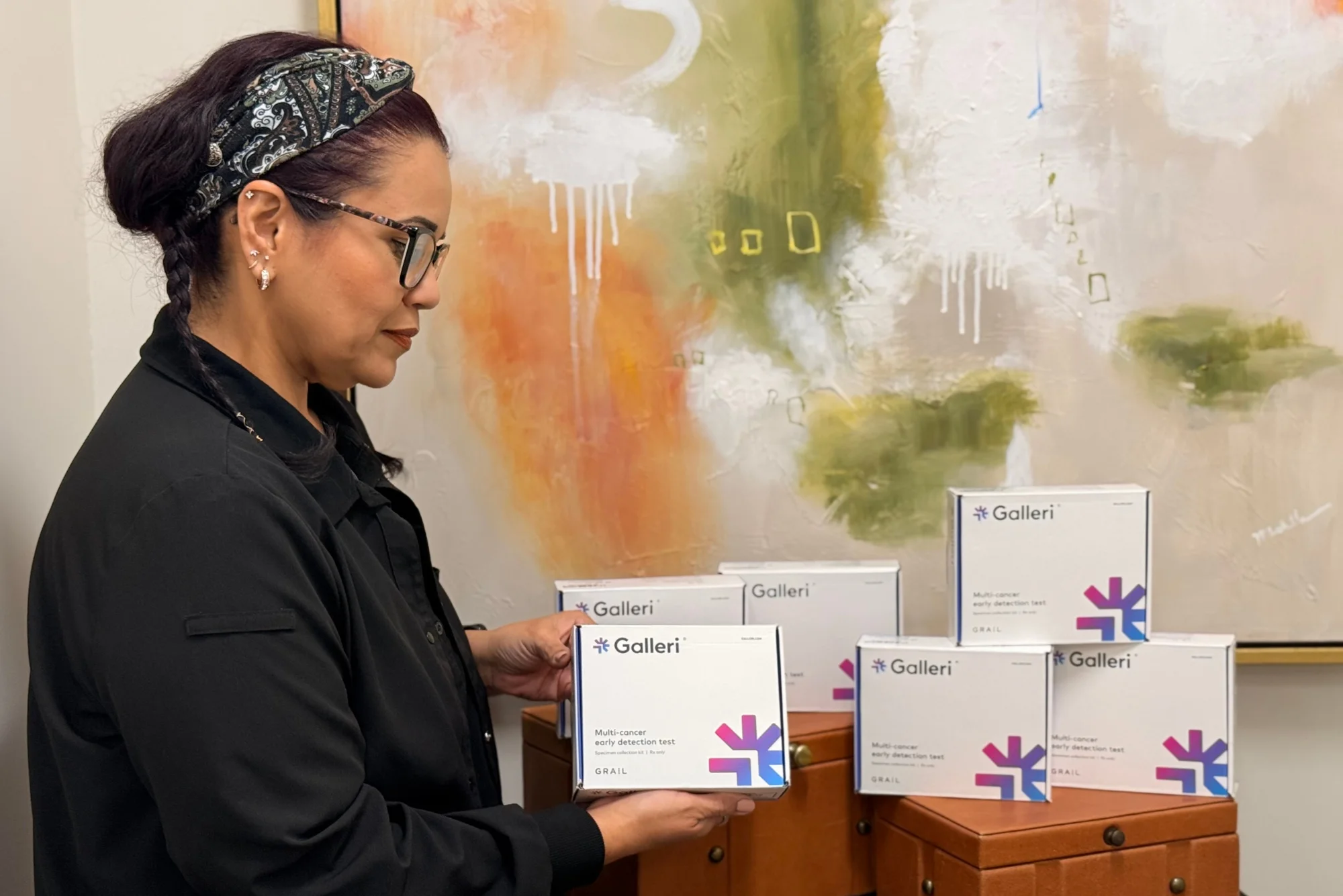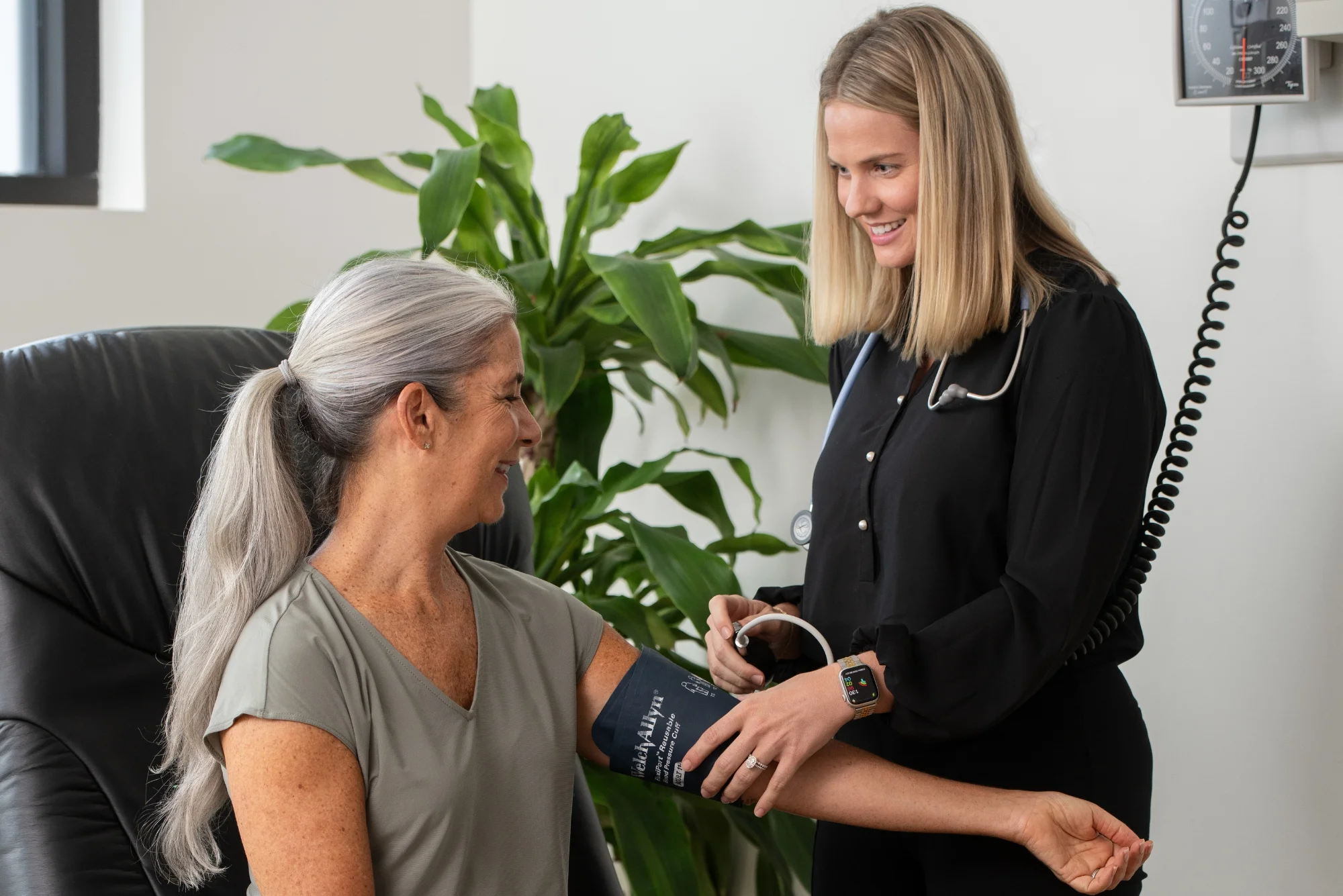
If you had to create a list of all the things that can make you feel less than yourself, your list would probably include big things (weight gain, the flu), little things (a traffic jam, a loss by your favorite sports team), and everything in between (deadline woes, relationship tension).
That’s because our bodies and brains can be quite the punching bag to so many outside influences. We absorb all the jabs, we react to them, and we feel them. Sometimes internal factors can influence our sense of self, too. And hormones may play a bigger role than expected.
“Hormones are chemical messengers in our body that come from the endocrine system, and they help to regulate and optimize various functions in the bodies—growth, reproduction, metabolism, and even mood,” states Debbie St. Clair, MD.
Because hormones are crucial to aging and overall well-being, it’s helpful to understand the various roles they play and what you can do when you’re not feeling quite right.
Hormone optimization is the opportunity to improve your overall health. It’s wanting your hormones to function as well and as efficiently as possible during a phase in life when they may be experiencing natural dysfunction. For women, this is generally when childbearing is no longer desired or possible.
Our physicians at Griffin Concierge Medical are here to help you work through any questions you have and options to consider when thinking about hormone optimization. For starters, here are a few things you should know.
Hormones: What Are They and What Do They Do?
You have dozens of different hormones in your body. Some are likely familiar to you (e.g., adrenaline) and some may be less known (adiponectin, anyone?). All hormones play roles in regulating various physiological processes, and they’re all interconnected—they react and communicate with each other, which creates various effects on the body.
That said, the hormones we’re going to concentrate on are the sex hormones: testosterone, progesterone, and estradiol. These hormone levels rise during puberty and then start declining as we age. For women, this timeline coincides with menstrual cycles and reproductive lifespan; as women reach perimenopause, levels start to drop. Male levels of testosterone rise during puberty and stay high until about their 40s, when most men start to see a significant decline.
These hormones also influence many other functions of the body. Studies show that having optimized hormone levels beyond your reproductive years can help reduce risk of dementia and cardiovascular disease. (PubMed Central)
“Because hormones are messengers to multiple organ systems in the body, they have a much broader function outside of just reproduction,” Dr. St. Clair says. “Hormones also play a key role in maintaining bone mass and muscle mass.”
Age is not the only contributor to hormone fluctuation. Stress, diet, exercise, and certain diseases or chronic conditions, all play a role in whether our hormones are at optimal levels or if they’re off.
Hormone Fluctuation: How Will You Know?
This is the million-dollar question, isn’t it? How do you know whether you’re tired because you stayed up late watching TV or because of hormones? How do you know whether you’re high-tempered because your partner wouldn’t stop talking during your TV time or because of hormones? Is your lack of interest in sex because of something your partner said or because of hormones?
One way to help identify whether your hormones are off is through your experience. For women, common signs of hormonal imbalance include period irregularity, hot flashes, night sweats, larger-than-normal mood swings, vaginal dryness, low libido, and weight gain (especially around midsection) despite following your normal diet and exercise routine. Men may experience more fatigue (especially out of proportion to activity level), a decrease in muscle mass or ability to gain muscle mass, loss of energy, and erectile dysfunction.
During your annual exam, let your Griffin physician know about any of these changes as they start occurring. Hormone analysis is a part of our standard lab panel starting for those individuals in their 30s or 40s. Getting a baseline of your hormone levels and checking them periodically as changes occur helps establish a trend that you and your physician can monitor.
“Hormone levels fluctuate, even in an optimal state. It’s not a simple yes-no test,” says Dr. St. Clair. “So, keeping an eye on the trends and looking at symptoms is important to determine if they are related to hormones.”
Above all, we’re looking for a holistic approach to determining what may be happening in your body to help you make informed decisions.
Hormone Optimization: What’s Best for You?
At Griffin Concierge Medical, our physicians take a personalized approach when it comes to hormone optimization. First, we’ll want to measure levels and look at trends to better understand what is happening at various levels.
If you’re experiencing symptoms that could be related to hormones (and other areas too), we’ll talk through the lifestyle factors that may influence hormone levels and overall health, such as:
- Exercise, both cardiovascular activities (like walking, biking, jogging, or swimming) and resistance training (using weights, bands, machines, even bodyweight exercises)
- Diet, making sure to emphasize whole foods (fruits, vegetables, whole grains, lean protein) and avoiding processed foods
- Sleep, in terms of both quantity and quality
- Stress Management, engaging in activities that can help soften the effects of stress, like meditation, yoga, walking, being in nature, and having healthy relationships
We’ll also discuss whether hormone replacement therapy (HRT) is right for you. The advantage is that HRT can help optimize the function of these hormones. Remember, the goal isn’t to be extreme in terms of weight loss or muscle gain, for example, but rather to help coax your hormone levels to a place where you start to feel better and can reduce associated symptoms.
For both women and men, there are different options of delivery for HRT, including oral, topical, injectable, and pellet insertion, and not all hormones come in all forms. Your Griffin physician will help you choose the best method for your unique situation:
- Pills: The advantage is the convenience factor—it’s easy to start and stop and easy to adjust dosages. The downside is that the user needs to comply to keep the effects going (by remembering to take a pill every day at the same time). Plus, some people just don’t like the idea of taking a pill every day.
- Creams: Like pills, creams are easy to start, stop, and adjust, but they also require that the user comply by applying the cream daily. With creams, sometimes you may not absorb the hormones as well through the skin as well as through other means.
- Patches: These are also convenient; you may need to replace them only once or twice per week—set it and forget it. Plus, you may experience more consistent levels of hormones via a patch than with oral medications because of its transdermal delivery (bypassing liver metabolism). The downside is also user compliance. You need to remember to change the patch to continue the effects.
- Injections: These are more common with men receiving a weekly testosterone injection and are convenient in that it’s only once per week, on average. But some people don’t like shots, so it may not feel like a pleasant option.
- Pellets: These are extremely convenient. It’s a procedure in the office where pellets are inserted underneath the skin, and they slowly release the hormones into the blood stream over a three- to six-month period. This method is also a way to maintain consistent levels to keep the hormone levels optimal. The downside is that it is a procedure where an incision is required, so you could experience some bruising and pause exercise for several days to recover.
When you start a program, with the guidance of your Griffin physician, we’ll check your hormone levels in about four to six weeks (no matter the delivery method) to see where you are. And, more importantly, to ask how you’re feeling. The key is to look at all factors to determine whether we’re on the right track or if we need to adjust.
In general, after starting hormone therapy, most people can see a difference in hot flashes, mood, sleep, and even libido within the first month or two.
For those looking to balance hormones along with gaining muscle and reducing fat, the effects of hormone therapy may take longer, likely three to six months for significant improvements, as lifestyle factors such as diet and exercise come into play as well. Here we’re looking for longevity and improving health in the long run.
Dr. St. Clair emphasizes, “When we get our patients on a good plan and we find that right combination of medications that’s right for them, and include lifestyle changes, we hear them saying, ‘I feel like I have my life back. I feel like myself again.’”
Sources
- “The Role of Estrogen Therapy as a Protective Factor for Alzheimer’s Disease and Dementia in Postmenopausal Women: A Comprehensive Review of the Literature.” PubMed Central, U.S. National Library of Medicine, https://pmc.ncbi.nlm.nih.gov/articles/PMC10480684/. Accessed 21 Feb. 2025.




